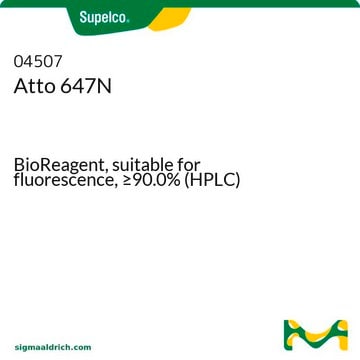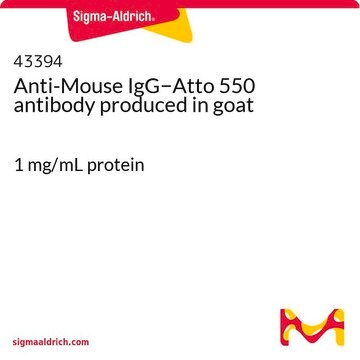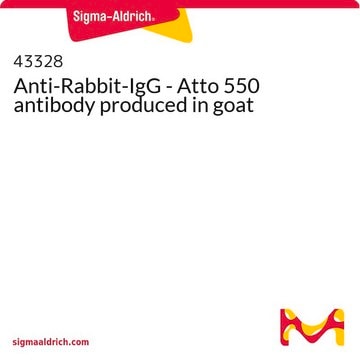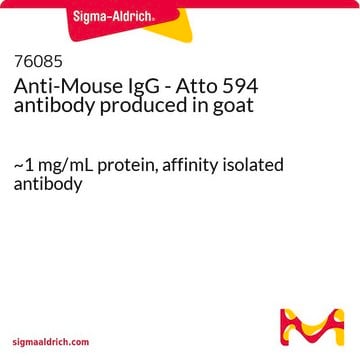65906
Phalloidin–Atto 647N
BioReagent, suitable for fluorescence, ≥80% (HPLC)
Synonym(s):
Atto 647N, Atto 647N-Phalloidin
About This Item
Recommended Products
product line
BioReagent
Assay
≥80% (HPLC)
manufacturer/tradename
ATTO-TEC GmbH
λ
in methanol
UV absorption
λ: 640-646 nm Amax
suitability
suitable for fluorescence
detection method
fluorometric
storage temp.
−20°C
Related Categories
General description
Application
Features and Benefits
- StrongAbsorption.
- HighFluorescence quantum yield.
- HighPhotostability.
- MinimalTriplet formation.
- GoodSolubility.
- Excellent Ozone Resistance.
Legal Information
Signal Word
Danger
Hazard Statements
Precautionary Statements
Hazard Classifications
Acute Tox. 1 Inhalation - Acute Tox. 2 Dermal - Acute Tox. 2 Oral
Storage Class Code
6.1A - Combustible acute toxic Cat. 1 and 2 / very toxic hazardous materials
WGK
WGK 3
Flash Point(F)
Not applicable
Flash Point(C)
Not applicable
Personal Protective Equipment
Certificates of Analysis (COA)
Search for Certificates of Analysis (COA) by entering the products Lot/Batch Number. Lot and Batch Numbers can be found on a product’s label following the words ‘Lot’ or ‘Batch’.
Already Own This Product?
Find documentation for the products that you have recently purchased in the Document Library.
Customers Also Viewed
Our team of scientists has experience in all areas of research including Life Science, Material Science, Chemical Synthesis, Chromatography, Analytical and many others.
Contact Technical Service









